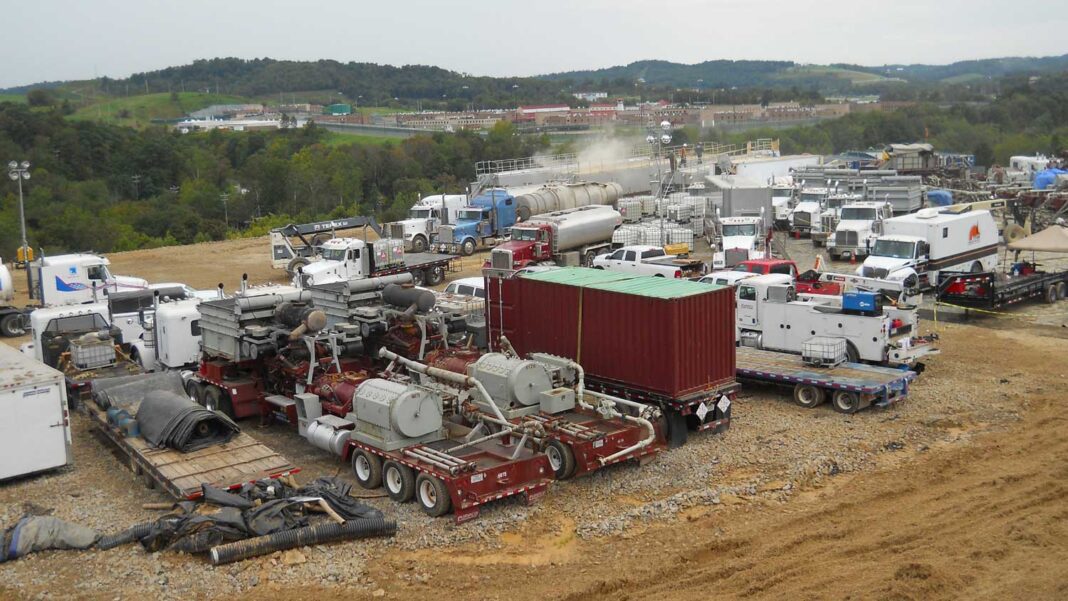Hydraulic fracturing – fracking – is used to extract natural gas, petroleum, brine or shale gas from “unconventional” deposits, which would be unprofitable by conventional mining methods. A mixture of water, sand and some chemicals (the so-called fracking fluid) is injected into the weakly structured bedrocks through the boreholes; it enables the sought-after substances to flow more freely to the places of own mining.
Fracking is a highly debatable technique that impacts the natural environment around fracking facilities and wells (lack and deterioration of the surface and groundwater water, its availability and quality, possible chemical releases, air pollution, increased noise levels, increased likelihood of earthquakes and overall disturbance of the natural environment), as well as the health of the local population.
Used chemicals and fission products used – almost 700 different compounds are listed – negatively affect the birth rate of humans and animals, increase the possibility of various civilisation diseases, and some compounds are even carcinogenic.
Increased risk of heart attacks
The journal of Environmental Research published an article assessing the increased incidence of cardiac heart attacks in counties in Pennsylvania where fracking wells are located, compared to demographically similar counties in the neighbouring state of New York, where fracking is banned.
The study monitored cardiovascular health and diseases in a total of 47 counties between 2005 and 2015. The researchers determined that in counties with fracking wells, the population was subject to a higher risk of suffering from a heart attack – and the number was even higher in the group of middle-aged men who were more likely to work in the sector, and, therefore, have a higher level of exposure to adverse effects.
The referred study is exceptional in its strict local focus because it compares the situation in immediately neighbouring states, with the only difference being in permitting (Pennsylvania) or banning (New York) the fracking method. Although the increases are in the order of percentage units, the study has brought another piece of evidence to the puzzle of information about the negative impacts of mainly unconventional natural gas development on the overall ecosystem in the vicinity of the mining facilities.
Source: ecowatch.com/fracking-wells-and-heart-attacks-2652964914.html
Featured picture: US Geological Survey, Public domain, via Wikimedia Commons

















